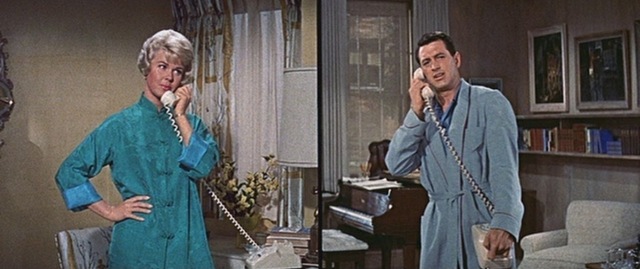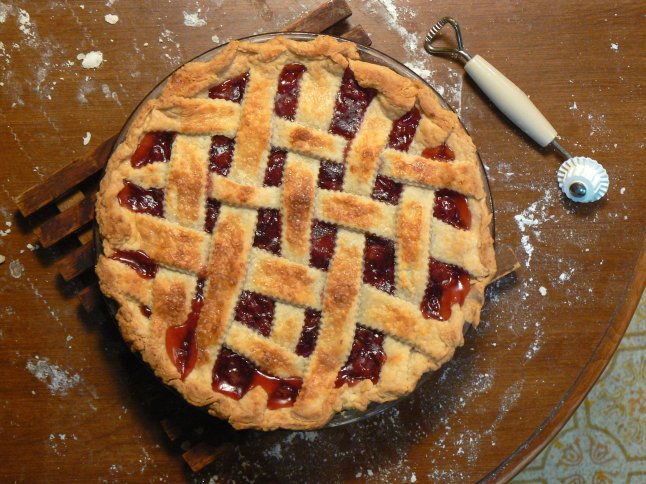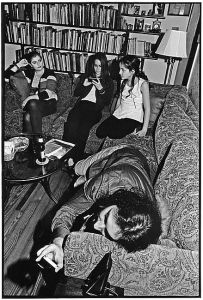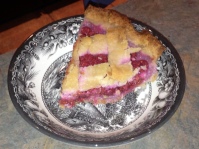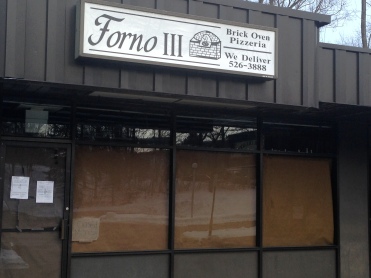Nearly thirty years ago, when I was starting out as an art teacher, I had a plan. I would teach art for five years and then transition back to becoming a full-time artist. The only trouble was that millions of others shared this plan, and although I worked steadily at my art work while I taught I never made the break and gave up my salary.
My own fear held me back even as my creative drive mushroomed. Whenever I sat down to work in my studio I found that I had more ideas than I could consume and produce on any given day. This, combined with limited time, young children at home, and less energy from teaching middle school students art all day, drastically slowed my work but the ideas kept coming.
There are many people outside the world of education who believe that public school teachers are responsible for the financial collapse of 2007. 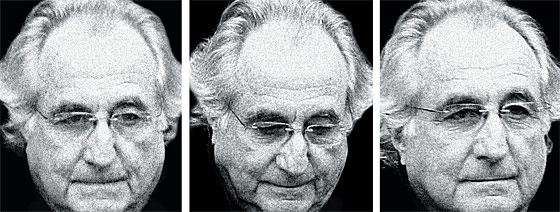
It had little to do with greed based hedge fund managers or corporate raiders, but teachers, who are riding on a gravy train of highway robbery because they have the audacity to expect a pension promised to them and contributed to by them. But more astonishingly is the lack of respect from teachers themselves towards art teachers. This lack of respect trickles down to students. I have been asked by students if art teachers receive the same pay as, say, a math teacher? “Yes,” I answer slowly. “Yes we do but it’s entirely unfair.” I pause. “Because I work a lot harder.”
Most teachers think their subject is the most important and I’m probably guilty of not seeing the day to day value of math because I never understood it. Math to me is a calculator, a ruler and my check book ledger. I have great respect for the sciences and advanced mathematical formulas that allow buildings and bridges to be built and airplanes to take off but most modern day to day life functions on basic arithmetic.
The truth of the matter is, it’s much harder to get someone to think creatively than it is to teach just about anything. This statement has never been more true than it is today. I’m not talking about teaching students to mimic my work and practice and improve on technique–which is on par with most subjects. I’m speaking about teaching students to think creatively. What does this even mean?
Is this good enough? has been around forever. Asked by uninterested students or students who lack any artistic ability they gave up before they started despite pleas from their art teacher to, “Just try and see what happens.” There have been numerous books written on the subject, the most famous of those, Drawing on The Right Side of the Brain by Betty Edwards or Drawing with Children by Mona Brooks. But the thesis of these books was built on the belief that drawing can be taught. And in many instances with a willing subject it can. But today I am worried. Not only about the disaffected students but also the artistic ones and everyone in between.

crying angel baby
Now I’m going to return to that young, idealistic teacher of thirty years ago. I was unconstrained by state or national standards, NCLB, Race to the Top, or state assessments that have tried and failed to make art exams with bubble sheets. Twenty years ago I read a story to my sixth grade students by Mark Strand called “The Tiny Baby.” It’s the story of a baby who is so small she fits inside of her mother’s purse. After the story I asked my students to imagine a scenario for this tiny baby. Imagine wide and large and place the baby anywhere in the world. The only restriction was the baby couldn’t be in danger or harmed in any way. I cut out two small babies from a magazine and photocopied them 100 times. The students were free to use any 2/D medium to create their picture. I was awash with questions like, “Can I make my baby surfing?” “Can my baby drive a dump truck?” Can I have two babies and have one baby painting the other baby inside another painting?” “Can my baby fly?”
Once they really understood that they could do anything, most of them set to work, almost breathless with ideas and energy. One in particular got me into trouble. A girl had drawn some garbage cans and placed her baby on the top of the overflowing can. The drawing was intricate and alarming. She had collaged bits of torn newspaper under the baby and on the ground around the can. When I asked her about her idea, she said she had heard on the news about a baby left in the trash that had been found, rescued and adopted. I told her I thought that was a wonderful story and I loved her picture and I selected it to hang in the front hallway of the school with about thirty others of varying abilities but all rich in ideas.
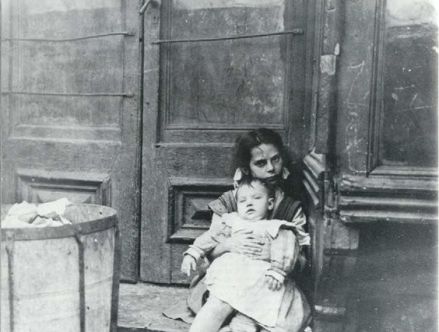
A young girl, holding a baby, sits in a doorway next to a garbage can, New York City. Jacob Riis 1890
Several teachers demanded that I remove the picture because it constituted child abuse. When I explained where the idea came from they were not consoled. A small battle ensued and a disinterested principal who eventually received a parent complaint asked me to take it down, which I did. My philosophy was and continues to be: if a child thinks an image who am I to discourage that thought? Not drawing babies in garbage cans, no matter how horrific, doesn’t make the problem go away.
A year later I stopped teaching art and ran the gifted and talented program where I focused on public speaking and debate. When the district closed that program a decade later I returned to art. It was this return that opened my eyes to a change so great that I might not have noticed as much if I had seen the demise of student’s creativity day by day. In those eleven years and the six that have followed, personal computers and smart phones have demanded my students’ attention to such a degree I could not get more than a small percentage of my students to think creatively. Questions like “Can I make my baby fly?”
were replaced with, “What does a mythical creature look like?”
“Your choice,” I’d answer, throwing out even more ideas about merging random things into something new, which is met with more blank stares. I’d prime the pump and hear, “What color should I choose?” And the ubiquitous, “Is this good enough?” Which translates into what do I need to do to get a decent grade from you so I can stop thinking about this dumb mythical creature which I don’t care about so why should anyone else? This happens while they text their friend under the table. I tried a similar project like the tiny baby when I returned to art from the gifted program. I read to them about a flying head who asked a community if they would join him on his quest to visit far off lands. As the head flapped his giant wings all the people ran away in fear. The head was so large it cast a shadow across the earth until he sailed away.The minute the head disappeared the people regretted their choice. I then asked the students to describe the head in a picture. I was met with blank stares and, despite prompting, they had absolutely no idea how to begin, or better yet why? Scientists differ on the amount of screen time children should have but I have witnessed the destruction of the creative mind first hand. People have always said children aren’t the same today but now it feels different and much more urgent. I average that less than 2% of my students have the ability or capacity to come up with an idea, let alone an original one. Once they do they don’t know what to do with it. How to color it, rework it or develop it.
I’m ready to leave this profession, both disheartened and hopeful despite the direction we’re headed as a nation in public education. I’m sure there are wonderful young art teachers out there with great ideas they hope to impart to their students and I wish them well–we need them desperately. They will probably be undervalued and overlooked in connection to any decision the school makes but they are our only hope to rescue the baby from the trash can.









